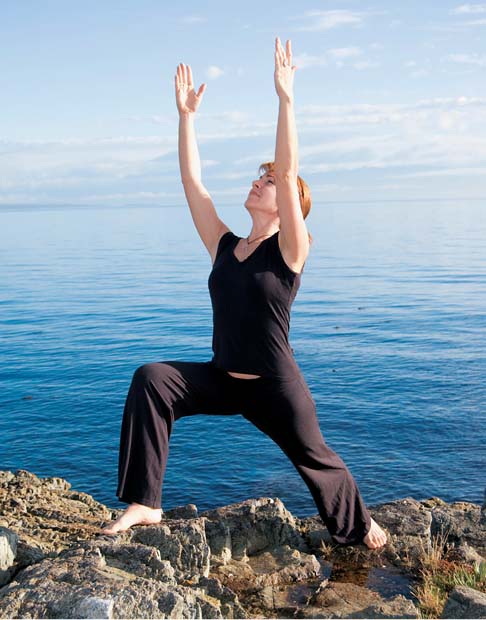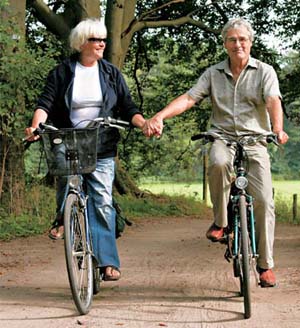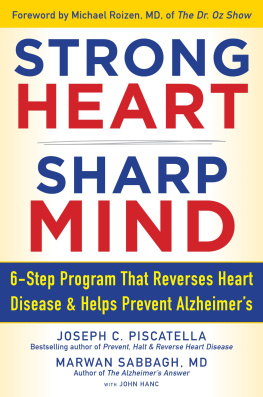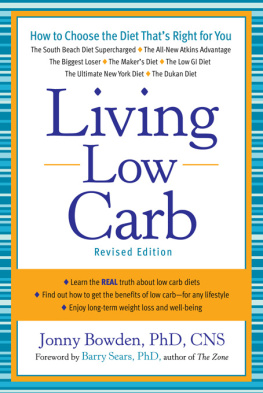THE MOST EFFECTIVE WAYS TO Live LONGER
THE SURPRISING, UNBIASED TRUTH ABOUT WHAT YOU SHOULD DO TO PREVENT DISEASE, FEEL GREAT, AND HAVE OPTIMUM HEALTH AND LONGEVITY
Jonny Bowden, Ph.D., C.N.S.

To Anja
You are the butter to my bread
and the breath to my life

Contents

I
Rein in the Four Horsemen of Aging
Don Wildman is a personal trainer who lives in Malibu, California. Which is kind of like saying, Babe Ruth is a baseball player from New York.
Wildman has completed the Ironman triathlon nine times; the Aspen, Colorado, downhill ski race; a three-thousand-mile bike race called the Race across America; and the Los Angeles and New York City marathons. In his spare time, he snowboards the Alaskan backcountry and competes in sailing eventshes in the record books for winning all three of the Chicago Yacht Clubs Mackinac races in a single season.
At his private gym in Paradise Cove, California, he leads a legendary workout known as The Circuit, which features more than 3,000yes, thousandrepetitions of weight lifting mixed with abdominal and balancing exercises. Participants cycle through twenty multipart exercises six times. Theres only one rule: You cant stop until its done. Not surprisingly, few people can do it, so classes are small. Those who do manage to finish it can barely drive home afterwardWildman usually spends the rest of the day mountain biking.
Oh, one more thing. Don Wildman is seventy-five years old.
ACTIVE AND AGING
Now maybe you dont aspire to be exactly like Don, and truth be told, few of us could, even if we wanted to. But Don Wildman is one of the thousands of people who are changing the way we look at aging in the twenty-first century. Theyre showing us whats possible. And theyre demonstrating, time and again, that aging doesnt have to look like what it looked like back in your grandmothers day.
There are shepherds in their seventies who right now climb punishing hills each day in Sardinia and glow with good health. There are folks in Okinawa who tend vegetable gardens and hoe fields well into their nineties. Explorer and writer Dan Buettner recently met a lovely hundred-year-old woman named Panchita in the Nicoya peninsula off Costa Rica, who spends her days cooking, splitting logs, and clearing brush with a machete. He wrote about her and her eighty-year-old son Tommy, who bicycles to see her every day, in his book, The Blue Zones. Closer to home, Thomas Perls, M.D., director of the New England Centenarian Study, told Time magazine about a man who was repairing roofs in his nineties (he lived to be 103 years old).

Then theres Bill Finch, who, at ninety-six, is a champion badminton player and the world record holder for the 1,500-meter run among ninety-five- to ninety-nine-year-olds (astonishingly, they have enough athletes in that age group to create an entire competitive class of runners). By the way, Bill still dates. And as of this writing, the mountain climbing world is all in a dither as professional climbers all over the globe vie for the privilege of accompanying legendary mountain climber Fred Beckey, who is about to depart for uncharted territories in Northern Spain. Beckey is eighty-five.
WHAT AGING WELL LOOKS LIKE
So maybe you dont aspire to be an elite runner at ninety, or the worlds fittest man at seventy-five, or conquering mountains at eighty-five. But Im betting you wouldnt be reading this book if you werent interested in living long and living vigorously. Think about it: Would you like to wake up in the morning with energy and enthusiasm, with all your faculties intact, able to take care of yourself physically and free of any major aches, pains, and disabilities? Would you like to live well into your nineties feeling basically happy, content, fulfilled, and healthy?
Let me guess: The answer is yes.
And heres the thing: Its totally possible.
Theres been a major paradigm shift in the study of aging and longevity. By observing societies that have unusual numbers of centenarians, weve been able to discover patterns of living that are associated with long life and good health. By experimenting in the lab weve been able to discover not only the genes that have an impact on life and health, but also, more important, what you can do to turn those genes on (more on that later). Scientists now have a pretty good idea of what behaviors are linked to longevity and why. And theres a ton of research showing just what people actually die of, and what factors influence those deaths.
Take, for example, the ten top causes of death in the United States.
Then theres diabetes, which comes in at number six on the top ten list. But that doesnt begin to give you the full story of the diabetes connection to longevity, because diabetesand its relative, metabolic syndrome (or prediabetes)puts you at enormous risk for heart disease. As many as 80 percent of diabetics die from vascular problems like stroke or heart disease. And, as youll learn in this book, diabetes is almost 100 percent preventable, or reversible, if you make the right lifestyle choices. Which, by the way, are not all that difficult.
The payoff, in terms of extra healthy years, is absolutely amazing. The Nurses Health Study, which has been going on since 1976 and involves more than 84,000 women, found that just five attainable strategies resulted in an astonishing 83 percent reduction in risk for major coronary events (including those that typically result in death). Are you ready for those five strategies? They are:
1. Not smoking
2. Consuming alcohol moderately
3. Exercising moderately
4. Eating a healthy diet
5. Keeping your weight under control
The take-home point is simple: Your future is in large measure determined by your own choices. Your life is in your hands. And while not everybody who makes all the right choices will live to be one hundred in great health, theres an awful lot you can do to increase the odds that youll be one of the growing number of folks who will. Living well, living long, and living with a high degree of function up to the very (peaceful) end is the goal of everyone reading this bookand its completely doable.
Which brings us to a concept I call the functionality curve.
THE FUNCTIONALITY CURVE
If you drew a graph showing age on one axis and function on the other (function meaning everything from how well your heart performs to your ability to have passionate sex), youd see a depressing slope in which function decreases as age increases. It would look like Figure A, below.
Notice how the slope goes down?
Well, it doesnt have to. The goal of anti-aging medicine is to rectangularize the functionality curve, says Ron Rothenberg, M.D., author of Forever Ageless. That is, to maintain all functionsheart, brain, muscle, lungs, etc.at a high level to the end and then fall apart quickly all at once.
A rectangularized functionality curve might look like Figure B.







